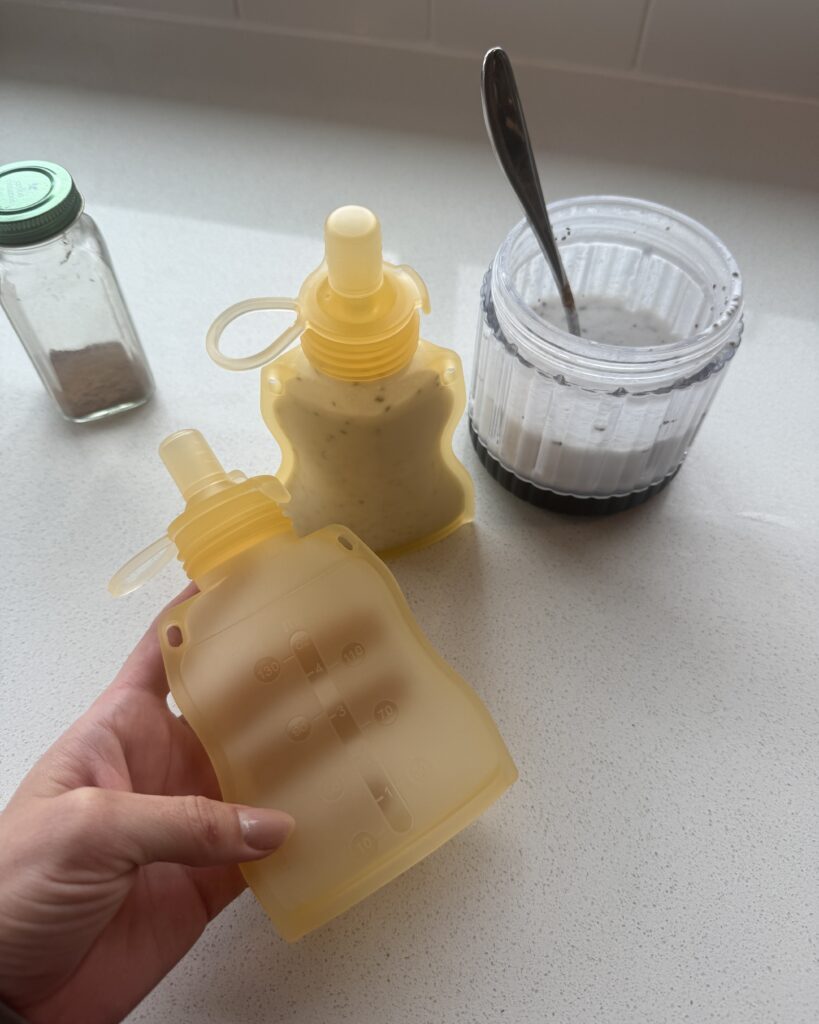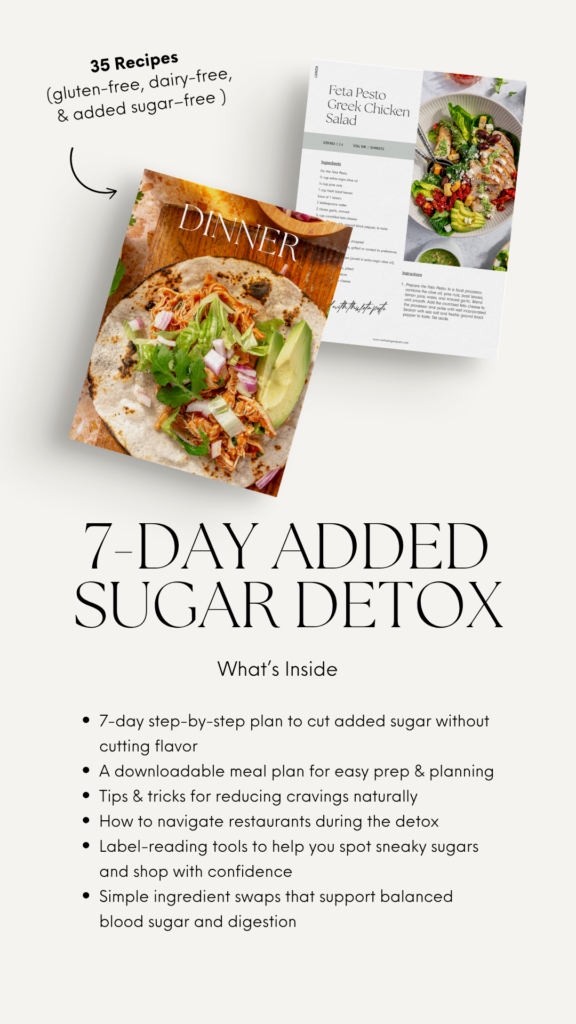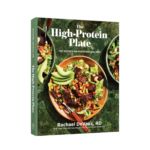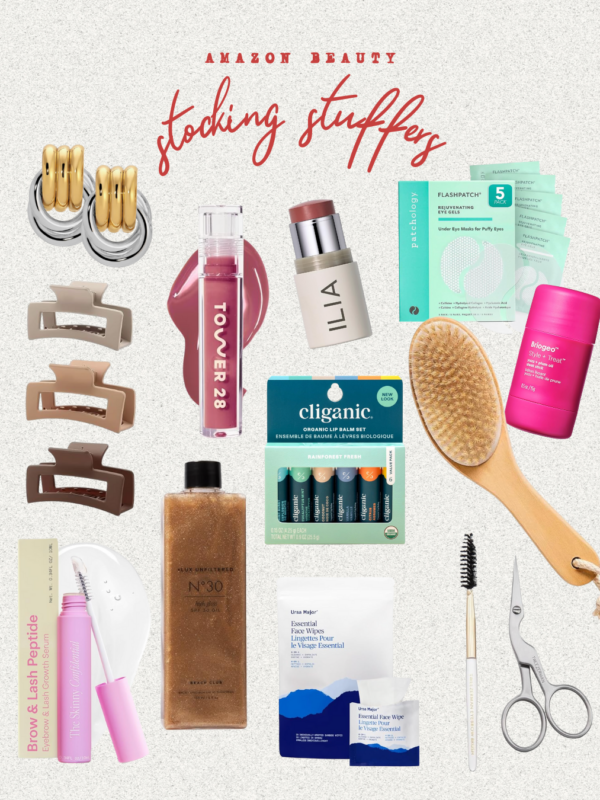
If there’s one thing I’ve learned as both a dietitian and a mom, it’s that limiting added sugar in babies’ diets early on can make a big impact. And when it comes to added sugar? Less is 100% more.
The first 1,000 days—from pregnancy through your baby’s second birthday—are when their bodies, brains, and habits are developing at lightning speed. It’s a window we don’t get back. And while occasional sweetness isn’t the end of the world, consistently offering foods with added sugar during this time can shape everything from taste preferences to long-term health risks.
This isn’t about being perfect. It’s about being intentional. So let’s break it down.
What Counts as Added Sugar?
Added sugar isn’t just white table sugar. It includes anything added to food to make it sweeter—like honey, maple syrup, agave, cane juice, fruit juice concentrate, and corn syrup. It’s different from the natural sugars in fruit or milk, which come packaged with fiber, vitamins, and minerals.
The problem? Many baby snacks, toddler drinks, yogurts, and cereals sneak in added sugar—even when the front of the package screams “organic” or “no refined sugar.” And even tiny amounts matter. Both the CDC² and the American Heart Association³ recommend zero added sugar for children under age 2.
Why the First 1,000 Days Are Such a Big Deal
This isn’t dietitian fear-mongering—it’s developmental science. During this window, your baby’s brain is wiring, their gut is forming, and their metabolic patterns are being set. What they eat (and what they don’t) helps shape how they respond to food down the road.
Introducing added sugar early on can train their taste buds to crave sweeter foods—and over time, that’s been linked to a higher risk of obesity, type 2 diabetes, and cardiovascular issues¹. Not ideal.
The good news? Keeping added sugars off the menu now helps set the stage for a more balanced relationship with food later. Trust me—it’s a whole lot easier to support healthy habits when the foundation is already there.
A Real-Life Lesson from History: The Sugar Rationing Study
One of the most fascinating studies on early sugar exposure came from a “natural experiment” in post-WWII Britain. During sugar rationing, people consumed much lower amounts of added sugar—especially during pregnancy and early childhood.
Fast forward a few decades. Researchers found that individuals exposed to lower sugar early in life had a:
- 35% lower risk of type 2 diabetes
- 20% lower risk of high blood pressure
- Delayed onset of both conditions by several years
Gracner et al., 2024⁴.
The takeaway: early exposure matters. Even sugar intake during pregnancy alone was enough to impact long-term health outcomes.
The Risks of Too Much Sugar (Even Early On)
- Obesity + Metabolic Issues: High sugar intake in infancy is associated with excess weight gain and increased risk for metabolic syndrome⁵.
- Heart Disease: Elevated blood pressure and LDL cholesterol in early childhood have been linked to added sugar exposure³.
- Dental Decay: Even baby teeth are vulnerable—sugar fuels the bacteria that lead to early childhood caries⁶.
- Inflammation: Added sugar can increase markers of chronic inflammation, including C-reactive protein (CRP)—a blood marker that signals stress in the body and is linked to long-term disease risk⁷.
What This Looks Like in Real Life (Hi, It’s Me Again)
When Hayes started solids, I made it a priority to offer real food—without added sweeteners. He loved smashed avocado, grass-fed liver, roasted carrots, and even sardines. Not every food was a hit, but that wasn’t the goal. I just wanted to offer him variety, texture, and whole-food flavor. That’s what builds taste preferences—and trust me, they form fast in littles!
Babies are naturally drawn to sweet. But they don’t need added sugar to enjoy food (I hate to say it but, neither do we!). And even with natural sugars from fruit, it’s worth keeping an eye on how much they’re getting throughout the day. For most babies, 1–2 servings of fruit per day is plenty. Their tummies are small, and fruit can easily displace other nutrient-dense foods if it becomes the go-to.
How to Keep Sugar in Check (Without Making It a Whole Thing)
This isn’t about doing everything “perfectly.” Just focus on the big levers:
- Skip the juice: Instead, choose whole fruit as it offers fiber and nutrients that juice doesn’t.
- Read the label: Look for added sugars and ingredients like syrups, evaporated cane juice, and fruit concentrate. Avoid if you notice.
- Rethink toddler drinks: Many of these are closer to soda than milk in sugar content⁵.
- Stick to real food: Pair healthy fats, fiber, and protein—even in early meals—to support blood sugar balance. If you need a pouch or something quick on the go, I recommend these food pouches as they focus on protein and healthy fats instead of, let’s say, a 1-ingredient applesauce pouch, which can be 100% sugar.
- Watch the fruit overload: Try to stick to 1–2 servings of fruit per day, and whenever you can, pair it with a fat or protein to help slow the blood sugar spike. Try this:
- Dice or mash up half of a banana and mix into plain full-fat Greek yogurt
- Steam apples with almond butter (if nuts have been introduced)
- Offer a small handful of halved blueberries, and a chia pudding on the side. I use these silicone reusable pouches and make my own.

One of Hayes’ favorites: I mix a can of full-fat, unsweetened coconut milk with a few tablespoons of chia seeds and a dash of cinnamon. (If there’s a thick layer of coconut cream on top when you open the can, I recommend adding it all to a blender and blend until smooth. Then stir in your chia seeds, pour into the pouches and set in the fridge for a few hours to thicken). It’s rich in fiber and healthy fats, and he devours it.
- Lead by example: Babies pick up on your habits, flavors, and routines. What you eat especially matters!!
If You’re Wondering Where to Start—Start With You
I’ve been intentional about limiting added sugar in my own life for years—partly because of what the science says, but also because I genuinely feel better when I keep it in check. Clearer skin, steadier energy, fewer random cravings—it’s real.
And that mindset is what led me to create my 7-Day Added Sugar Detox. If you’re starting to think more critically about the sugar in your baby’s diet, one of the best places to start is by looking at your own. So many kids grow up in our kitchens and they see what we eat. They reach for what we keep around, which can be a plus, or not so much.

By reducing added sugar in your own pantry and routines, you’re making it easier for your baby (and your whole family) to eat well without even thinking about it. Less sugar in the house = the less they’ll ask for it. I think of it as a quiet way to lead by example.
Whether you’re looking to reset your own habits, clear the noise around food labels, or just get inspired with simple, balanced meals, this Detox is a great place to start.
What If Your Family Doesn’t Get It?
Let’s say you’ve started incorporating these changes into you and your baby’s lives and now you’re out in the real world, outside of your house. One of the hardest parts about cutting back on added sugar isn’t always the labels or the shopping… it’s navigating family dynamics. Especially when the people you love (and who love your baby!) don’t totally understand what you’re doing or why.
I’ve been there. And I get it!
Whether it’s a well-meaning grandparent offering juice or someone bringing a tray of frosted treats “just for fun,” it can feel so uncomfortable setting boundaries around food, especially when you’re trying not to offend anyone.
I went through this myself during and after college, when I first started making changes to my diet. I was cutting back on processed foods and avoiding a lot of the dishes that usually showed up at family gatherings. I remember starting to bring my own food and meals, and honestly, I felt so embarrassed at first.
But I also knew I felt so much better when I ate that way. At the time, I was learning how to go gluten-free and dairy-free because of intolerances, and I didn’t want to deal with the stomachaches, brain fog, or low energy that would always follow certain meals. I wasn’t trying to be difficult, I was just trying to feel good in my body.
It’s one of those things where you have to go in with confidence. And if you get pushback, just stand firm in your choices. You know what’s best for you (and your family). Over time, my family just came to expect that I’d bring my own food lol and it was totally fine!
Here’s a few tips for your littles:
- Lead with the why, not the rules. Instead of “We don’t give Hayes sugar,” try: “We’re being intentional about what we offer in these early years so he can develop a healthy relationship with food from the start.”
- Bring alternatives. If there’s a birthday party or family dinner, I’ll pack a snack or treat I feel good about. No drama, no guilt—just a backup plan.
- Plan ahead for holidays and birthdays. Big events often revolve around sweets, but that doesn’t mean your baby has to miss out. Try making my Smash Cake or make it into cupcakes, add coconut cream or plain full-fat greek yogurt with berries, or homemade muffins sweetened with applesauce. You can make it festive and aligned with your goals.
- Pick your battles. Try not to put too much pressure on it. One bite of cake at a celebration isn’t the end of the world. It’s the daily habits that shape things long term & what you’ve been doing won’t be ruined in one day.
- Stay confident. You don’t owe anyone a detailed explanation. You’re the parent. You get to decide what goes on your kid’s plate 🙂
If this is something you’re working through right now, just know that you’re not alone! You’re doing the best you can with the info you have, and that’s something to be proud of.
Why This Matters So Much to Me
Keeping added sugar off your baby’s plate during those first 1,000 days is one of the simplest and most impactful things you can do for their long-term health. The research shows how much it can protect against chronic disease, support brain and metabolic development, and shape more balanced food preferences that actually stick.
And the best part is when you build that solid foundation early, you’re not constantly fighting food battles down the line. Trust that the small choices you make now really do matter.
I also love my parents so much, but I didn’t grow up with an emphasis on limiting added sugar. This wasn’t something we talked about or really knew much about at the time. Hayes is the first in our family who’s been able to start life with a totally different approach to food—and I’m really proud of that.
Years ago, I started shifting my own habits. Not perfectly, not overnight, but intentionally. I focused on lowering my added sugar intake to feel better, balance my energy, and support my hormones—and it ended up helping me prepare for pregnancy, carry a healthy baby, and now fuel my family with the kind of food I wish I’d had growing up.
If you’re a parent and this feels new or overwhelming, I hope this gives you a sense of direction—not pressure. We all start somewhere. What matters most is what you do from here, not what was in your pantry five years ago.
You’re already doing something amazing by learning, asking questions, and showing up for your kids (and yourself!). Let this be your gentle reminder that the small shifts you make now really do have ripple effects.
If you’re curious about cutting back on added sugar in your own diet, check out these posts on reducing added sugar for realistic tips and everyday swaps.
FAQ: Added Sugar + Babies
How much added sugar should babies have?
None. Both the CDC and American Heart Association recommend zero added sugar for children under age 2.
Is fruit sugar the same as added sugar?
No. Natural sugars found in whole fruit come packaged with fiber, water, and nutrients—your baby’s body processes them differently than added sugar. My advice? Skip the juice and stick with whole fruits for those extra benefits.
What are hidden sources of added sugar in baby food?
Yogurt, baby cereal, pouches, toddler snacks, and even formula can all contain added sugars. Always read the label. As a dietitian, I personally recommend Serenity Kids food pouches—they focus on nutrient density, protein, and quality fats. You can use code ‘rachaelsgoodeats‘ at checkout on their site for 20% off.
References
- WHO Guidelines on Sugar Intake
- CDC: Added Sugars in the Diet
- Vos et al., AHA Circulation: Added Sugars and Cardiovascular Risk
- Gracner et al., Science, 2024 – UK Sugar Rationing Study
- DeBoer et al., Early Childhood Growth Failure & Metabolic Syndrome Risk
- Colak et al., Sugar and Dental Caries in Young Children
- Added Sugar & Oral Health Update (PMC): Added Sugar and Dental Caries
















I love seeing posts like this! This is so informative and valuable for parents, those wanting to become parents, and caretakers alike. Thank you for the sharing this knowledge and keeping it approachable. I’ve been following you for a while and I’ve always admired your dietary approaches and practical tips.